The Economics and Statistics Division maintains archives of previous publications for accountability purposes, but makes no updates to keep these documents current with the latest data revisions from Statistics Canada. As a result, information in older documents may not be accurate. Please exercise caution when referring to older documents. For the latest information and historical data, please contact the individual listed to the right.
<--- Return to Archive
For additional information relating to this article, please contact:
March 31, 2025INTERNAL TRADE IN MANUFACTURING AND WHOLESALE TRADE Annual manufacturing goods sales (2022 vs 2023)
Nova Scotia's interprovincial manufacturing goods exports increased 63.6% in 2023 when compared with 2022, the largest gain reported among provinces. Six out of ten provinces reported declines in interprovincial exports, with New Brunswick reporting the largest decline in interprovincial shipments.

Among provinces that Nova Scotia ships manufactured goods to, Ontario was the largest recipient in both 2022 and 2023, and saw the largest growth in Nova Scotia imports from 2022 to 2023. Nova Scotia shipped more manufacturing output to every province except Saskatchewan in 2023 compared to 2022.
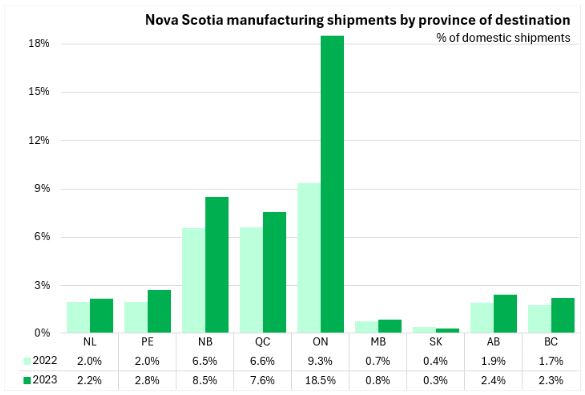
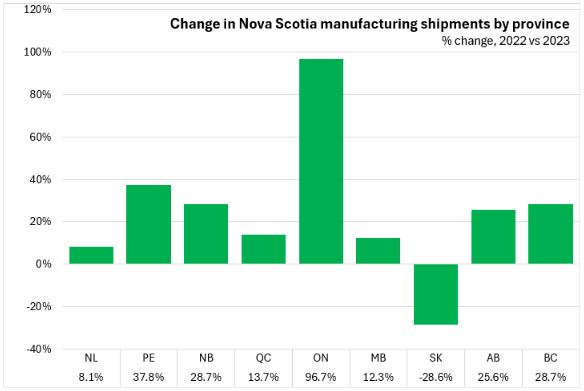
Interprovincial imports of manufactured goods was down in every province except Ontario, Saskatchewan, and British Columbia. Newfoundland and Labrador saw the largest decline in interprovincial manufacturing imports, followed by Nova Scotia.

In 2023 Nova Scotia imported most of its manufacturing goods from Ontario, followed by Québec. New Brunswick saw the largest decline in shipments to Nova Scotia, while Ontario reported the largest gain.
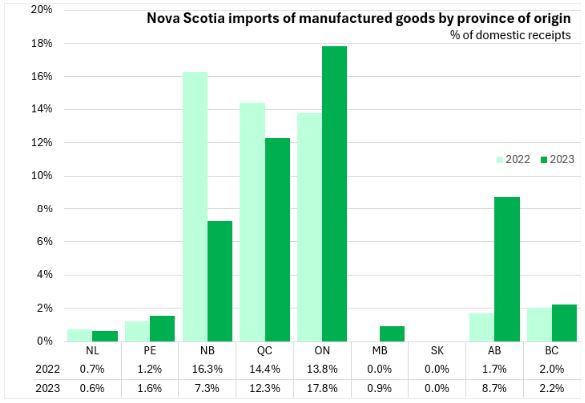
Food manufacturing provided the majority of Nova Scotia's interprovincial manufacturing goods exports in 2023, making up 77.2% of manufacturing shipments. Machinery manufacturing goods exports saw the largest growth in 2023 compared with 2022, while transportation equipment manufacturing shipments saw the largest decline.
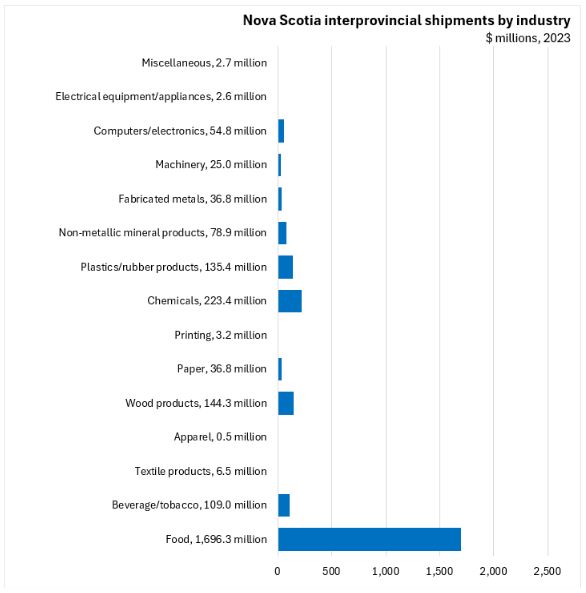
Food manufacturing also makes up the bulk of Nova Scotia's interprovincial goods imports, accounting for 67.0% of manufacturing goods imported from other provinces. Beverage/tobacco products were the next most common item imported, making up 8.9% of manufacturing imports. The strongest growth in imports among manufactured goods was in non-metallic mineral products, followed by furniture/related products and leather/allied products. Primary metals and textiles saw the largest decline in interprovincial imports.
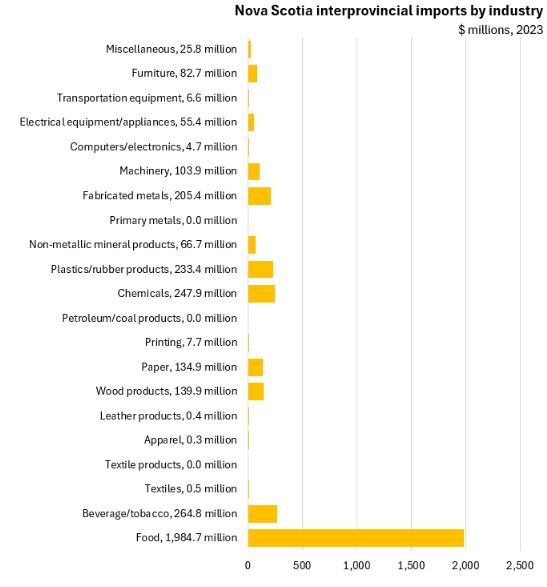
Annual wholesale goods sales (2022 vs 2023)
Interprovincial wholesale goods imports declined 0.8% in Nova Scotia in 2023. Saskatchewan reported the largest increase in wholesale imports, while Alberta saw the largest decline.
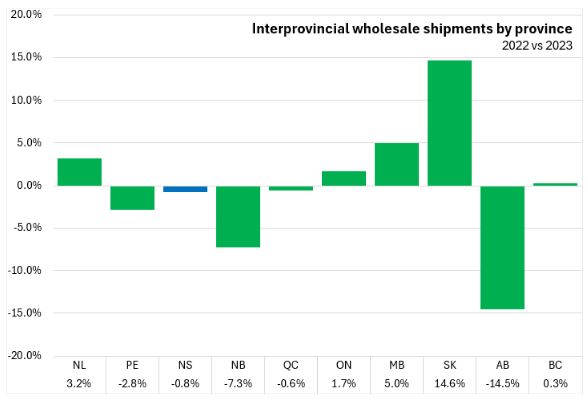
Among provinces that receive wholesale goods from Nova Scotia, Ontario was the largest recipient in both 2022 and 2023, accounting for 31.4% of Nova Scotia interprovincial wholesale exports. The largest decline was in Québec.

Interprovincial wholesale good imports were down in five provinces, led by Nova Scotia and Saskatchewan, with no change in Québec. Newfoundland and Labrador reported the largest increase in wholesale good imports when compared with 2022.
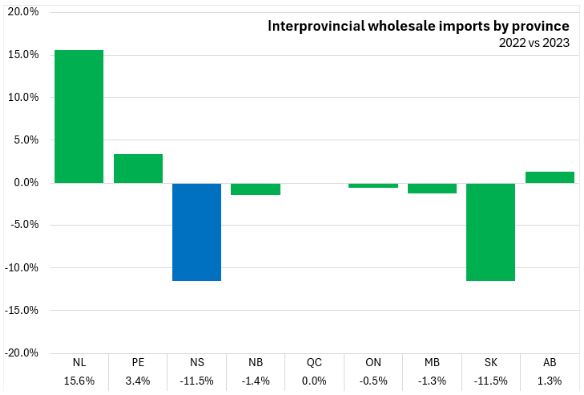
Nova Scotia imports the most wholesale goods from Ontario (49.6%), followed by Québec.
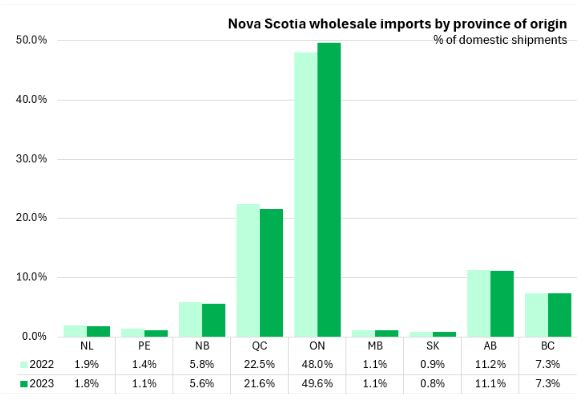
Food/beverage/tobacco products are the largest category of interprovincial wholesale exports for Nova Scotia, followed by building materials/supplies.
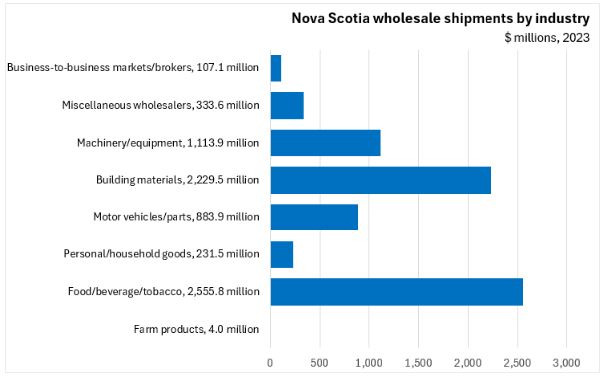
Origin and destination of manufacturing sales by industry, annual, Table: 36-10-0698-01
Origin and destination of wholesale sales by industry, annual, Table: 20-10-0087-01
Internal trade in Canada: Value of interprovincial trade of manufactured goods and wholesale trade, 2023
<--- Return to Archive